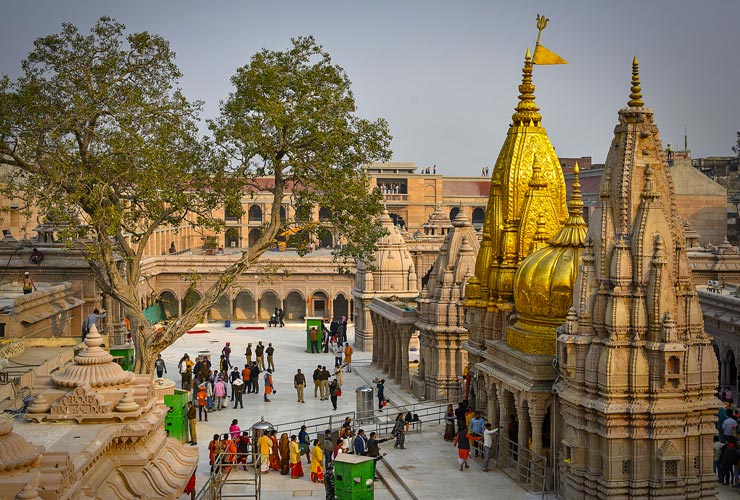Varanasi, also known as Kashi or Banaras, is one of the oldest continuously inhabited cities in the world and holds a timeless appeal for pilgrims, seekers, and travelers. Situated on the sacred banks of the Ganga River, Varanasi is often referred to as the “Spiritual Capital of India.” Its narrow winding lanes, ancient temples, and bustling ghats are steeped in history, culture, and spirituality, making it a destination unlike any other. This is the city where life and death coexist in harmony, offering profound insights into the cycle of existence.
The Spiritual Significance of Varanasi
According to Hindu mythology, Varanasi was founded by Lord Shiva, making it one of the most sacred places for Hindus. It is believed that dying in Varanasi and being cremated along the banks of the Ganga liberates one’s soul from the cycle of birth and rebirth, granting moksha (salvation). The city’s spiritual energy is palpable, and it’s no surprise that Varanasi has inspired saints, poets, and philosophers for centuries.
The Ghats of Varanasi
The ghats of Varanasi are the city’s lifeline, each with its own unique story and significance. These steps leading to the river’s edge are not just physical spaces but also spiritual and cultural hubs.
Dashashwamedh Ghat
The most prominent and lively ghat, Dashashwamedh is known for its spectacular Ganga Aarti held every evening. Priests clad in saffron robes perform the ritual with oil lamps, conch shells, and chants, creating a mesmerizing experience.
Manikarnika Ghat
This is one of the main cremation ghats, symbolizing the cycle of life and death. Watching the rituals here is a deeply moving experience that offers a unique perspective on life’s impermanence.
Assi Ghat
Located at the confluence of the Ganga and Assi rivers, this ghat is a quieter spot popular among both locals and tourists for meditation, yoga, and serene sunrises.
Harishchandra Ghat
Another cremation ghat, Harishchandra is associated with King Harishchandra, known for his unwavering commitment to truth and duty.
Sacred Sites and Temples
Varanasi is home to countless temples, each with its own historical and religious significance.
Kashi Vishwanath Temple
Dedicated to Lord Shiva, this temple is one of the twelve Jyotirlingas (shrines where Shiva is worshipped in the form of a fiery column of light). It is the spiritual epicenter of Varanasi, and a visit here is considered incomplete without offering prayers.
Sankat Mochan Hanuman Temple
This temple dedicated to Lord Hanuman is revered by devotees seeking relief from life’s troubles. The temple’s serene ambiance and devotional hymns create an atmosphere of peace.
Durga Temple
Also known as the Monkey Temple due to the many monkeys that inhabit the premises, this temple is dedicated to Goddess Durga and showcases classic North Indian temple architecture.
Cultural and Spiritual Experiences
Ganga Aarti
The evening Ganga Aarti at Dashashwamedh Ghat is an unmissable spectacle. The synchronization of fire, water, and chants creates a divine atmosphere that captivates all who witness it.
Boat Rides on the Ganga
A sunrise or sunset boat ride along the Ganga provides stunning views of the ghats and temples. It’s a serene way to experience the city’s spiritual energy.
Sarnath
Located just a short drive from Varanasi, Sarnath is where Lord Buddha delivered his first sermon after attaining enlightenment. The site is home to ancient stupas, monasteries, and the iconic Ashoka Pillar.
Life and Death in Harmony
Varanasi’s essence lies in its acceptance of life and death as two sides of the same coin. The city’s cremation ghats, rituals, and spiritual teachings offer profound insights into the transient nature of life. This philosophy is deeply ingrained in the daily lives of its residents, creating a unique blend of pragmatism and devotion.
Cuisine and Local Life
Varanasi’s cuisine is as vibrant as its culture. From the famous Banarasi paan to delectable street food like kachoris, jalebis, and malaiyo (a seasonal sweet), the city offers a culinary journey that delights the senses. Don’t miss a visit to the local markets, known for their Banarasi silk sarees, brassware, and wooden toys.
Practical Travel Tips
- Best Time to Visit: October to March, when the weather is pleasant.
- How to Reach: Varanasi is well-connected by air, rail, and road. The Lal Bahadur Shastri Airport offers direct flights to major cities.
- Dress Code: Modest attire is recommended, especially when visiting temples and ghats.
- Stay Options: Choose from heritage hotels, ashrams, or budget accommodations depending on your preferences.


13 Comments